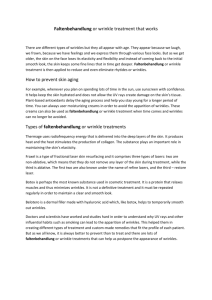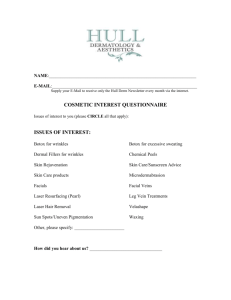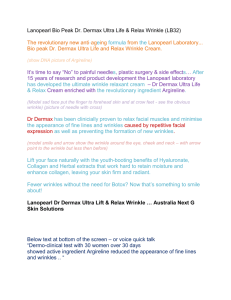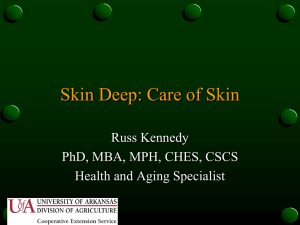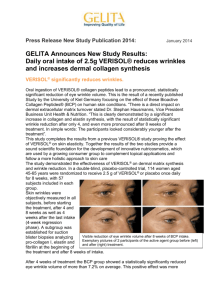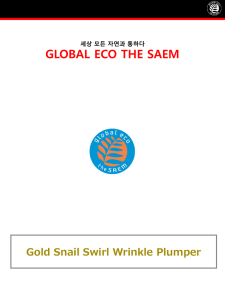Wrinkle creams: Your guide to younger looking
advertisement
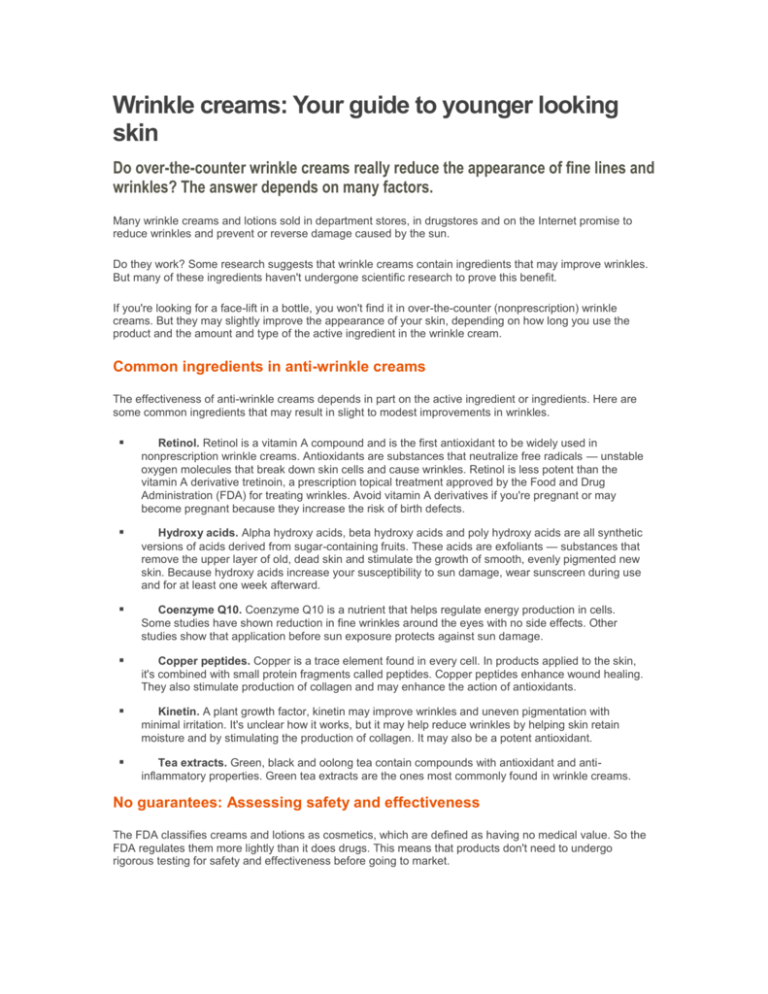
Wrinkle creams: Your guide to younger looking skin Do over-the-counter wrinkle creams really reduce the appearance of fine lines and wrinkles? The answer depends on many factors. Many wrinkle creams and lotions sold in department stores, in drugstores and on the Internet promise to reduce wrinkles and prevent or reverse damage caused by the sun. Do they work? Some research suggests that wrinkle creams contain ingredients that may improve wrinkles. But many of these ingredients haven't undergone scientific research to prove this benefit. If you're looking for a face-lift in a bottle, you won't find it in over-the-counter (nonprescription) wrinkle creams. But they may slightly improve the appearance of your skin, depending on how long you use the product and the amount and type of the active ingredient in the wrinkle cream. Common ingredients in anti-wrinkle creams The effectiveness of anti-wrinkle creams depends in part on the active ingredient or ingredients. Here are some common ingredients that may result in slight to modest improvements in wrinkles. Retinol. Retinol is a vitamin A compound and is the first antioxidant to be widely used in nonprescription wrinkle creams. Antioxidants are substances that neutralize free radicals — unstable oxygen molecules that break down skin cells and cause wrinkles. Retinol is less potent than the vitamin A derivative tretinoin, a prescription topical treatment approved by the Food and Drug Administration (FDA) for treating wrinkles. Avoid vitamin A derivatives if you're pregnant or may become pregnant because they increase the risk of birth defects. Hydroxy acids. Alpha hydroxy acids, beta hydroxy acids and poly hydroxy acids are all synthetic versions of acids derived from sugar-containing fruits. These acids are exfoliants — substances that remove the upper layer of old, dead skin and stimulate the growth of smooth, evenly pigmented new skin. Because hydroxy acids increase your susceptibility to sun damage, wear sunscreen during use and for at least one week afterward. Coenzyme Q10. Coenzyme Q10 is a nutrient that helps regulate energy production in cells. Some studies have shown reduction in fine wrinkles around the eyes with no side effects. Other studies show that application before sun exposure protects against sun damage. Copper peptides. Copper is a trace element found in every cell. In products applied to the skin, it's combined with small protein fragments called peptides. Copper peptides enhance wound healing. They also stimulate production of collagen and may enhance the action of antioxidants. Kinetin. A plant growth factor, kinetin may improve wrinkles and uneven pigmentation with minimal irritation. It's unclear how it works, but it may help reduce wrinkles by helping skin retain moisture and by stimulating the production of collagen. It may also be a potent antioxidant. Tea extracts. Green, black and oolong tea contain compounds with antioxidant and antiinflammatory properties. Green tea extracts are the ones most commonly found in wrinkle creams. No guarantees: Assessing safety and effectiveness The FDA classifies creams and lotions as cosmetics, which are defined as having no medical value. So the FDA regulates them more lightly than it does drugs. This means that products don't need to undergo rigorous testing for safety and effectiveness before going to market. The FDA does step in, however, when advertisements portray cosmetics as drugs or when cosmetics contain ingredients that may pose a potential health hazard to consumers. For example, in 2002, the FDA ordered manufacturers of products containing alpha hydroxy acids to include a warning label stating that the acids may increase the risk of sunburn. Because the FDA doesn't evaluate cosmetic products for effectiveness, there's no guarantee that any overthe-counter product will reduce your wrinkles or even contain any of its advertised ingredients. Consider these points when judging the merits of using a wrinkle cream: Nonprescription wrinkle creams contain lower concentrations of active ingredients than do prescription creams. Therefore results, if any, are limited and usually short-lived. Research suggests that certain ingredients may improve wrinkles. However, most anti-wrinkle creams haven't been subjected to the comprehensive, objective research required to prove this benefit. Cost has no relationship to effectiveness. Just because a wrinkle cream is expensive, doesn't mean it's more effective than a cheaper product. You'll likely need to use the wrinkle cream once or twice a day for many weeks before noticing any improvements. And once you discontinue using the product, your skin will likely return to its original appearance. Some products may cause skin irritation, rashes, burning or redness. Be sure to read and follow the product instructions to limit possible side effects. Your anti-wrinkle regimen An anti-wrinkle cream may lessen the appearance of your wrinkles, depending on how often you use it, the type and amount of active ingredient in the wrinkle cream and the extent of the wrinkles you want to treat. But if you want to take the guesswork out of your skin-care regimen, try these more reliable ways to improve and maintain your skin's youthful appearance. Protect your skin from the sun. Exposure to ultraviolet (UV) light speeds up the natural aging process of your skin, causing wrinkles and rough, blotchy skin. In fact, sun exposure is the No. 1 reason for aging signs in the skin, including uneven pigmentation. Protect your skin — and prevent future wrinkles — by limiting the time you spend in the sun and always wearing protective clothing and hats. Also, use sunscreen when outdoors, even in winter. Choose products with built-in sunscreen. When selecting skin-care products, choose those with a built-in sun protection factor (SPF) of at least 15. Also, be sure to select products that block both UVA and UVB rays. Use moisturizers. Dry skin turns plump skin cells into shriveled ones, creating fine lines and wrinkles long before you're due. Though moisturizers can't prevent wrinkles, they can temporarily mask tiny lines and creases. Don't smoke. Smoking causes narrowing of the blood vessels in the outermost layers of your skin. It also damages collagen and elastin — fibers that give your skin its strength and elasticity. As a result, skin begins to sag and wrinkle prematurely. If you're concerned about the appearance of your skin, see your dermatologist. He or she can help you create a personalized skin-care plan by assessing your skin type, evaluating your skin's condition and recommending products likely to be effective. If you're looking for more dramatic results, a dermatologist can recommend medical treatments for wrinkles, including prescription creams, Botox injections or skin resurfacing techniques.
